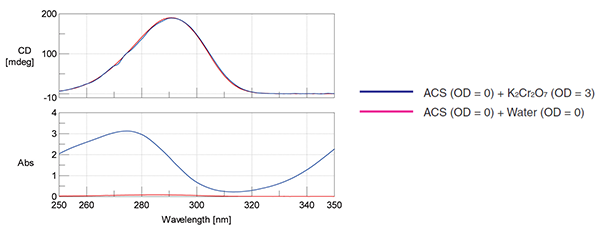
The instrument was calibrated with d-10-camphorsulphonic acid. CD spectra were collected on a JASCO J-710 CD spectropolarimeter at 4☌ in a 1 mm quartz cuvette. The protein concentrations were in the 10 μM range and verified spectrophotometrically at 280 nm with extinction coefficients calculated using ProtParam ( ). All proteins were dissolved in 50 mM borate (cytochrome C, β-amylase and carbonic anhydrase II), pH 7.5, or exchanged into pure water (lysozyme, ubiquitin and GB1) using NAP-5 columns (GE Healthcare). Recombinant ubiquitin (human) was provided by Thomas Seiboth (FLI Jena) and the β1 immunoglobulin-binding domain of protein G (GB1) was expressed and purified as described ( Bellstedt et al., 2012). Lysozyme (chicken), cytochrome C (horse), β-amylase (sweet potato) and carbonic anhydrase II (bovine) were purchased from Sigma Aldrich at the highest purity available. 2 METHODS 2.1 CD Data collection and processing Here, we describe a novel web server-based tool combining different methods for estimating secondary structure content and analysing far-UV CD data based on a selected set of far-UV CD data as available from the PCDDB. Recently, Janes and co-workers ( Klose et al., 2012) launched the tool DichroMatch for matching spectra against reference data.
#Jasco spectra manager circular dichroism code#
In the PCDDB, each entry contains sequence and experimental information for the respective protein and includes the PDB code for proteins of which 3D structures are available.ĭuring the recent past, different web services ( Louis Jeune et al., 2012 Raussens et al., 2003 Whitmore and Wallace, 2004, 2008) or programmes ( Böhm et al., 1992 Johnson, 1999) for analysing of CD data and estimating secondary structure content became available. With the advent of the Protein Circular Dichroism Data Bank (PCDDB), a public repository for far ultraviolet (far-UV) and synchrotron radiation CD spectral data and their associated experimental metadata, the number of publicly available CD spectra increased enormously ( Lees et al., 2006 Wallace et al., 2006 Whitmore et al., 2011). The quality of the output of the aforementioned methods relies on the availability of a reference database of CD spectra of proteins whose 3D structure is known ( Lees et al., 2006). The sum of all fractional weights is equal to 1 in constrained fits. The CD spectrum of a given protein can be represented by the molar ellipticity as a function of wavelength λ, where f n is the fraction of each secondary structure n, and is the ellipticity at each wavelength of each nth secondary structural element ( Greenfield, 2006). However, CD spectroscopy carries a number of advantages: it is a well-established label-free technique requiring comparably small amounts of material, and a short time is necessary for assessing structural parameters of proteins like secondary structure, conformational changes, (un)folding and interactions ( Whitmore et al., 2010).

Compared with X-ray crystallography and nuclear magnetic resonance (NMR) spectroscopy, the structural information obtained from CD is limited.

Before resource-intensive detailed structural and functional studies, it is extremely helpful, if not essential, to validate the proper fold of purified recombinant proteins and one of the most versatile tools to study protein fold(ing) constitutes circular dichroism (CD) spectroscopy. Escherichia coli is, so far, the most widely used host for structural studies, which in turn require significant amounts of recombinant protein. The progress in structural biology has been driven by developments in recombinant protein expression technology, as well as by advances in methodology, data analysis and bioinformatics. The past 20 years have witnessed a dramatic growth of the number of high-resolution protein structures deposited in the protein data bank (PDB: Berman et al., 2000).


 0 kommentar(er)
0 kommentar(er)
